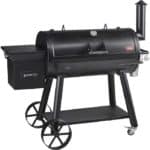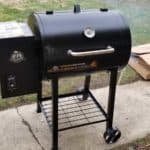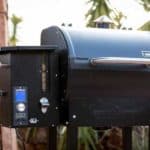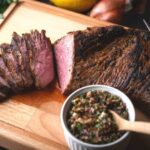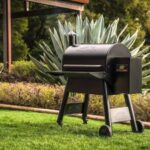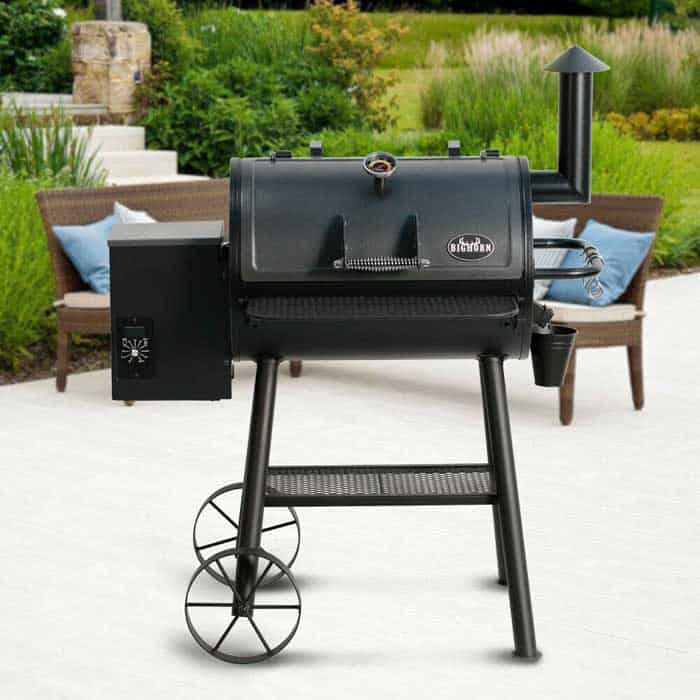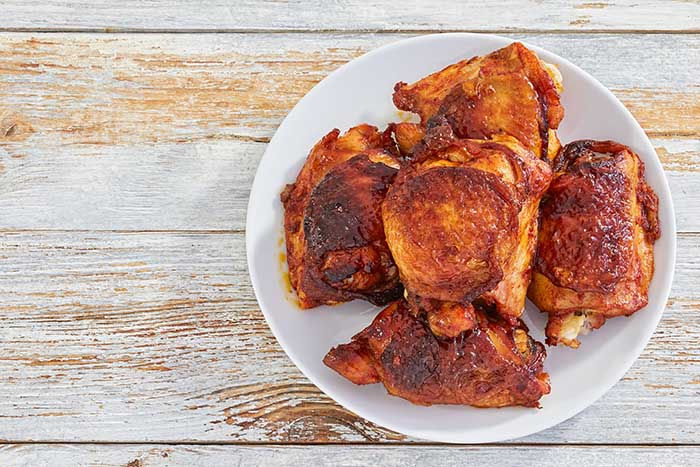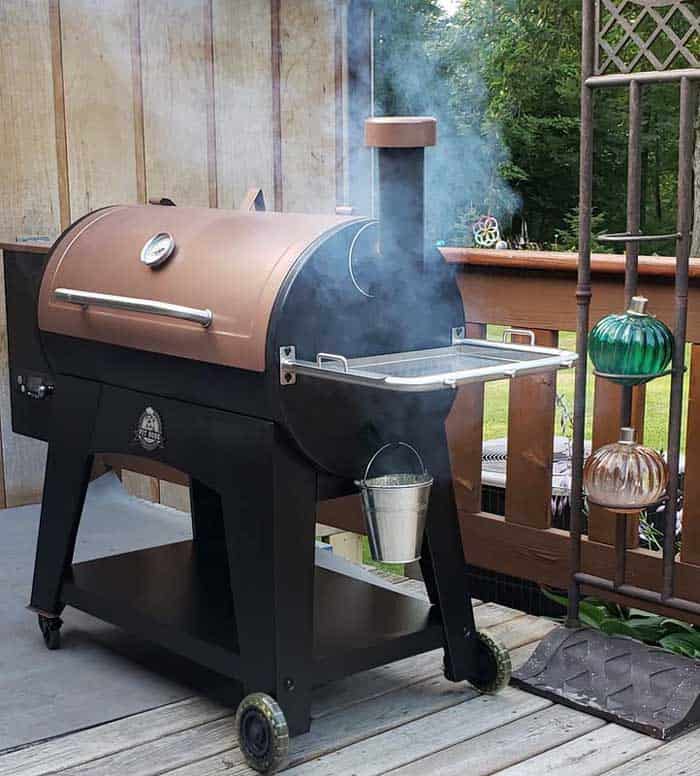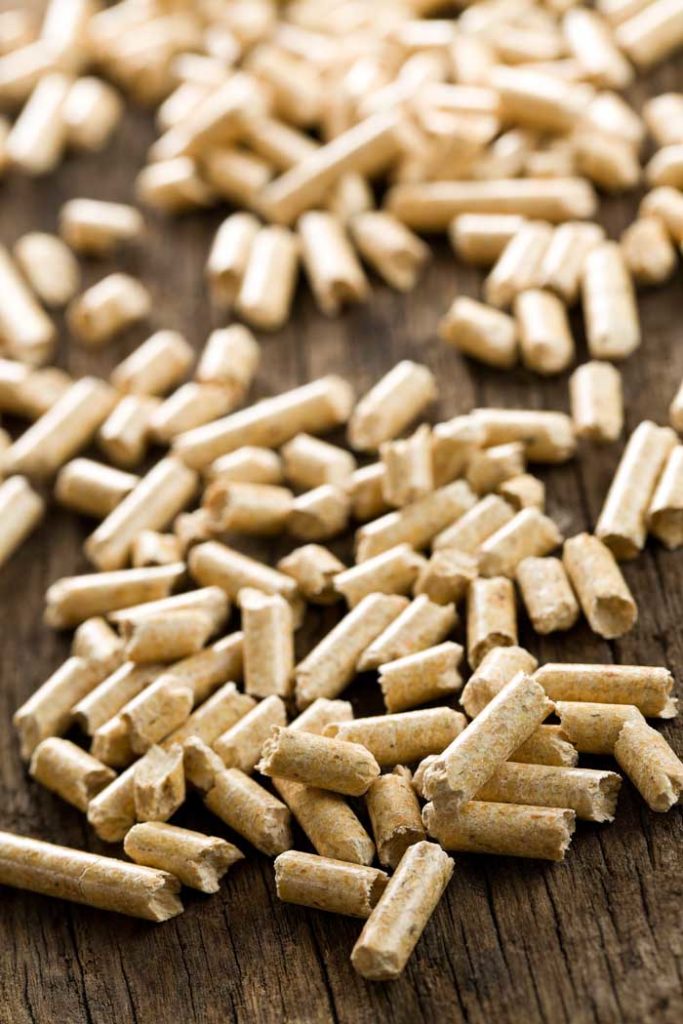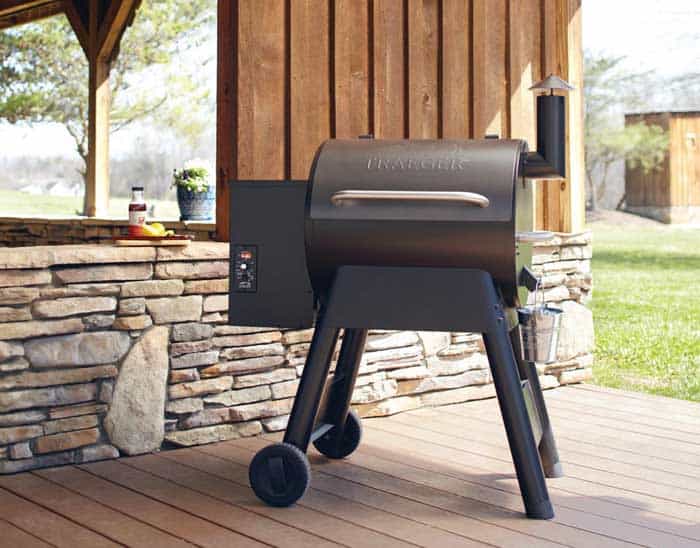For wood pellet newcomers, pellet grills and smokers are an excellent way to get into barbecue. Learn how to get the best out of your wood cooker with our step-by-step guide to using a pellet smoker grill.
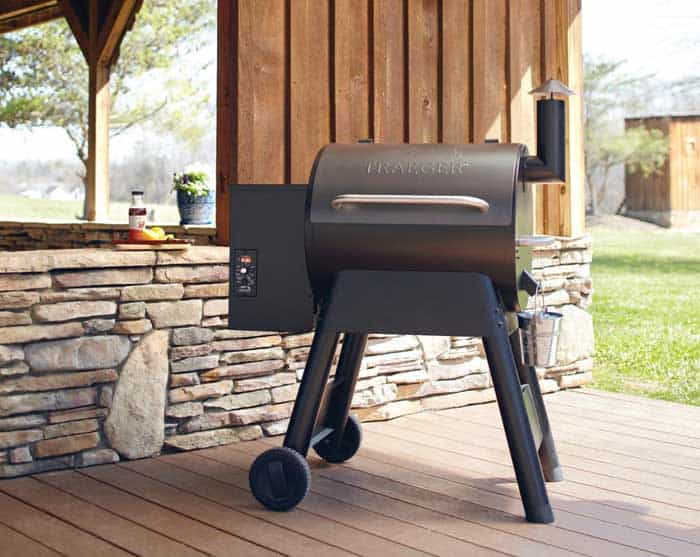
Since their introduction in the 1980s, the pellet grill has revolutionized backyard barbecue. Cooking with wood pellets through a motor-controlled auger means that you can smoke meat, grill over high heat, and even bake, all in one unit.
The big appeal of pellet smokers is how much easier than charcoal grills they are to use. They’re simpler in every aspect, including startup, temperature control, and even maintenance.
If the prospect of getting to grips with your new pellet grill is daunting, you’ve come to the right place. My guide to pellet grill basics will show everything you need to know.
From getting a good bark, to developing iconic smoke rings, we have everything you need to know.
Season Your Pellet Smoker
Before we do anything, we need to season the smoker. This is a crucial step for any type of new smoker, and helps protect it from the negative effects of long term continuous use. The basic premise is to apply cooking oil to the grates and inside of the chamber and then take the smoker on a ‘dry run’ without food. This will cook the oil onto the inside surfaces of the smoker, forming a protective layer across it.
After you have seasoned it, leave the smoker to cool and rest for at least 24 hours before using properly.
Preheat Your Smoker
A big pain with charcoal grills is heating them up. Lighting them and keeping them at a good temperature can be tricky. Not so with a pellet grill. They work much in the same way as an oven.
With your grill plugged in to an electric outlet or socket, switch it on and select your target temperature. If you’re going for barbecue smoking, choose 225°F (107°C).
Most smokers will take about 10 minutes to preheat and come to temperature.
You should hear a dull roar come from the smoker as it heats up. This is the motorized auger and firebox springing into action, and is a good sign that your smoker is working and warming up.
Pro tip: While pellet smokers do have a temperature gauge on their control display, it’s not unusual for these to be inaccurate by up to about 20°F either way. Get a dual probe smoker thermometer. These allow you to simultaneously measure cooking and internal meat temperatures. The best models are more accurate than the majority of built-in gauges.
Add Your Meat
With your pellet smoker now running at target temperature, carefully place your meat on the smoker grates. For the best results, place the food in the middle of the grate. This will ensure that the meat is far away enough from the heat to not dry out, but close enough to be cooked at temperature.
Pay Attention to Fat Content
A mistake that a lot of BBQ newcomers make is with the meat itself. Meat that is too lean can dry out quickly, whereas meat with too much fat content can get in the way of the smoke working its way into the flesh of the meat.
If you choose to smoke a cut like brisket, then be sure that you trim the layer of fat on it to about ½ inch thick before putting it on the smoker.
Get Your Wood Pellet Choice Right
No two pellet flavors are the same, and can dramatically impact the quality of your final cut of meat. While mesquite or hickory works well with strong and robust meats like brisket, they will overpower chicken, turkey, and fish. If you decide to smoke poultry, use light and sweet wood like apple or cherry. If you’re smoking ribs, apple is the perfect pick. Read our guide to the best wood pellets for smoking to find out more.
225 is the Magic Number
Different meats have different ‘safe’ temperatures for when they are done, however smoking temperatures stay pretty consistent. While some go closer to 250°F or 275°F, the general rule is to go for 225°F. This allows for enough low and slow content to allow the fat in any cut of meat to render while not being high enough to dry it out.
If in doubt, go for 225°F.
Aim for Blue Smoke
A good color of smoke is a good sign of healthy grill, and pellet smokers are no different.
If you see white or gray smoke coming from your smoker, it’s likely that your pellets are not burning properly. If food is cooked in this type of smoke (also called creosote), it will taste extremely bitter and nasty.
Aim for clear, almost blue smoke for the best results.
Smoke Over Indirect Heat
Barbecue is done best low and slow, and this means setting up your pellet smoker grill for 2-zone cooking. One zone is directly over the fire, and the other is away from it. This ‘indirect’ zone is the best place to smoke meat as it won’t be exposed to high heats, putting it at risk of drying out or burning on the outside.
Most pellet smokers have the firebox set away from the grill grates, so most of the work is done for you. If yours has the heat immediately beneath one section of the grates, then you will need to keep indirect heat in mind.
Try a Water Pan
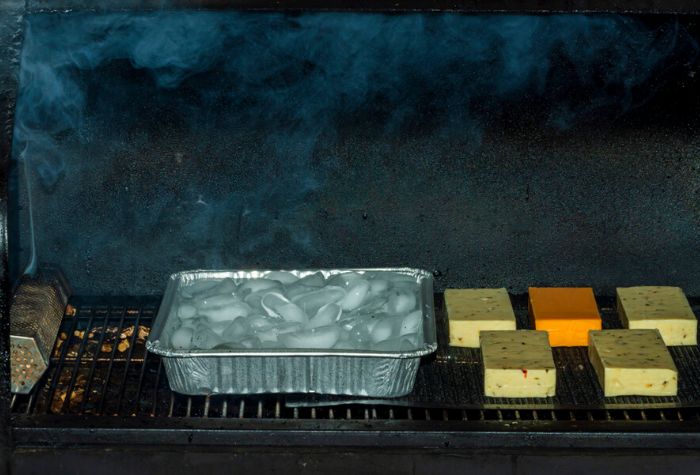
If you encounter problems with unstable temperatures within your grill’s chamber, it might be worth trying a water pan in your pellet grill.
A water pan is a simple container of water that sits on your grill’s grates and, as the temperature in your grill rises, releases water vapor into the chamber. This not only helps prevent your meat from turning dry but also helps stabilize cooking temperatures, which is especially important over the course of long cook times.
Get the Right Tools & Accessories
As well as investing in wood pellets, there are a number of add-ons and accessories that will help elevate your backyard cooking, whether it’s making temperatures easier to control or keeping your grill chamber cleaner.
The best pellet grill accessories worth investing in are a separate dual probe thermometer (the built-in probes provided with pellet grills can be unreliable), grill brushes for efficient grate cleaning, and a solid grill cover.
Shut Down
Unlike a charcoal grill or smoker, you don’t just let a pellet smoker grill burn out. Instead, you will need to turn shut it down manually.
Start by deactivating the auger. This will stop feeding pellets to the main chamber, thereby allowing the embers to die down. The best way to do this is via the PID controller on your cooker. Open the chamber door and turn the controller down to its lowest smoke setting. This will allow the grill to burn what’s left in the auger.
After this, turn off the grill. This changes unit to unit, but this is generally done via a simple off button. You may need to hold the button for several seconds for it to completely shut down.
Allow it cool for 20-30 minutes. The grill’s motor may continue to run for a few minutes but will shut down completely once it has cooled.
Run the inside of the cooker down with a grill brush. This will help to remove any excess dirt, grease, or pellets.
Don’t forget to empty and clean out the grease tray. Doing this regularly will help to keep your grill running efficiently and without any flare-ups. Also, don’t forget to clean your pellet grill every few weeks.
Allow the unit to cool completely before using a grill cover or putting it away.
